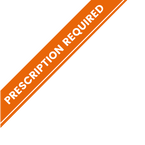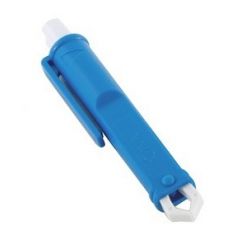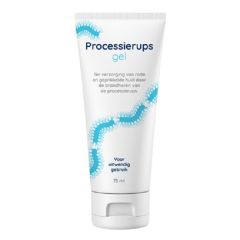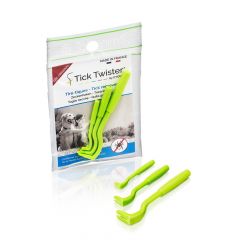-
NAME OF THE VETERINARY MEDICINAL PRODUCT
Laxatract 667 mg/ml syrup for dogs and cats
-
QUALITATIVE AND QUANTITATIVE COMPOSITION
Per ml:
Active substance:
Lactulose 667.0 mg
(as lactulose, liquid)
Excipient:
Benzyl alcohol (E1519) 2.0 mg
See section 6.1 for the full list of excipients.
-
PHARMACEUTICAL FORM
Syrup.
Clear, viscous, colorless, or light brownish-yellow solution.
-
CLINICAL PARTICULARS
4.1 Target species
Dog and cat.
4.2 Indications for use, specifying the target species
For the treatment of constipation (e.g., due to intestinal atony following surgery, hairballs, massive intestinal content).
For the symptomatic treatment of conditions requiring facilitated defecation (e.g., partial obstructions caused by tumors or hernias, rectal diverticulum, proctitis, and intoxications).
4.3 Contraindications
Do not use in animals with complete gastrointestinal obstruction, perforation of the digestive tract, or risk of perforation.
Do not use in cases of hypersensitivity to the active substance or excipients.
4.4 Special warnings for each target species
None.
4.5 Special precautions for use
Special precautions for use in animals:
Lactulose solution contains free lactose and galactose, and it may alter insulin needs in diabetic animals. Caution is advised when used in animals with an already disturbed fluid and electrolyte balance, as lactulose may worsen these conditions in cases of diarrhea.
Special precautions to be taken by the person administering the veterinary medicinal product:
This veterinary medicinal product may cause flatulence and diarrhea. Accidental ingestion, particularly by children, must be avoided. To prevent accidental ingestion, the veterinary medicinal product should be stored and used out of reach of children. Always close the bottle after use.
This veterinary medicinal product contains benzyl alcohol. This preservative may cause allergic reactions (hypersensitivity). People with known hypersensitivity to benzyl alcohol should avoid contact with the veterinary medicinal product. Wash hands after use. In case of direct contact with skin or eyes, rinse thoroughly with clean water. If irritation persists, consult a doctor.
4.6 Adverse reactions (frequency and seriousness)
Symptoms such as flatulence, bloating, and cramps are common at the start of treatment but usually diminish over time. Diarrhea and dehydration are signs of (relative) overdose. In such cases, consult a veterinarian.
The frequency of adverse reactions is defined as follows:
- Very common (more than 1 in 10 treated animals)
- Common (more than 1 but less than 10 in 100 treated animals)
- Uncommon (more than 1 but less than 10 in 1,000 treated animals)
- Rare (more than 1 but less than 10 in 10,000 treated animals)
- Very rare (less than 1 in 10,000 treated animals, including isolated reports).
4.7 Use during pregnancy and lactation
May be used during pregnancy and lactation.
4.8 Interaction with other medicinal products and other forms of interaction
None known.
4.9 Dosage and method of administration
For oral administration.
Dogs and cats: 400 mg of lactulose per kg body weight per day, corresponding to 0.6 ml of the veterinary medicinal product per kg body weight per day. This dose should preferably be divided into 2–3 administrations throughout the day. The dosage may be adjusted as needed.
The treatment may only start showing effects after 2–3 days.
If abdominal pain or diarrhea occurs, consult a veterinarian to adjust the treatment. The veterinary medicinal product can be mixed with food or administered directly into the mouth.
4.10 Overdose (symptoms, emergency procedures, antidotes), if necessary
No adverse effects other than those mentioned in section 4.6 are known in case of overdose. Rehydrate and balance electrolytes as necessary.
4.11 Withdrawal period
Not applicable.
- PHARMACOLOGICAL PROPERTIES
Pharmacotherapeutic group: Osmotic laxatives, lactulose
ATCvet code: QA06AD11
5.1 Pharmacodynamic properties
Lactulose is a disaccharide (galactose/fructose) that cannot be hydrolyzed by mammalian digestive enzymes. Upon reaching the intestines, lactulose is metabolized by resident bacteria, resulting in the formation of short-chain fatty acids (lactic, formic, and acetic acids) and CO2. These acids have a dual effect: they increase osmotic pressure, drawing water into the intestines, which results in a laxative effect, and they lower the pH of the intestinal contents. This acidification facilitates the transfer of NH3 (ammonia) from the blood to the intestines, where it is trapped as [NH4]+ (ammonium ion) and excreted with the feces.
5.2 Pharmacokinetic properties
Lactulose is poorly absorbed after oral administration and reaches the intestines unchanged. In dogs and cats, less than 2% of an oral dose of lactulose is absorbed (in the small intestine). The absorbed product is not metabolized and is excreted unchanged in the urine within 24 hours.
- PHARMACEUTICAL PARTICULARS
6.1 List of excipients
Benzyl alcohol (E1519)
Purified water
6.2 Major incompatibilities
As no compatibility studies have been performed, this veterinary medicinal product must not be mixed with other veterinary medicinal products.
6.3 Shelf life
Shelf life of the veterinary medicinal product as packaged for sale: 2 years.
Shelf life after first opening of the bottle: 3 months.
6.4 Special precautions for storage
No special storage conditions are required for this veterinary medicinal product.
6.5 Nature and composition of the immediate packaging
50 ml and 125 ml: HDPE bottle with LDPE insert and HDPE cap.
325 ml: HDPE bottle with LDPE insert and PP cap.
Oral dosing syringe (5 ml and 10 ml): cylinder and plunger made of polypropylene (PP), graduated in 0.2 ml increments.
Carton box with one 50 ml bottle and one 5 ml oral dosing syringe
Carton box with one 125 ml bottle and one 5 ml oral dosing syringe
Carton box with one 325 ml bottle and one 10 ml oral dosing syringe
Not all pack sizes may be marketed.
6.6 Special precautions for disposal of unused veterinary medicinal products or waste materials derived from their use
Any unused veterinary medicinal product or waste materials derived from such products should be disposed of in accordance with local requirements.







